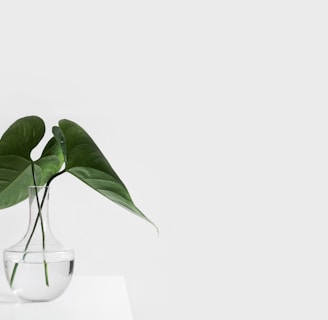New Customers - Save 10% Here Call or Text 925-264-9646
The Ultimate Guide to Cleaning with Vinegar
Adrian D.
2/8/20253 min read


Vinegar is often hailed as the ultimate natural cleaning solution. It's affordable, eco-friendly, and versatile, making it a favorite in households looking to ditch harsh chemicals. But while vinegar works wonders in many situations, it’s not a one-size-fits-all cleaner. In fact, using it on the wrong surfaces can cause more harm than good.
This ultimate guide will break down what vinegar cleans effectively, where it falls short, and how to use it safely to keep your home sparkling.
Why Vinegar Works as a Cleaner
Vinegar, particularly white distilled vinegar, contains acetic acid, which gives it powerful antibacterial and degreasing properties. It breaks down mineral deposits, grease, grime, and even some bacteria, making it a go-to for many household cleaning tasks.
What You Can Clean with Vinegar
✅ 1. Glass and Mirrors
Why It Works: Cuts through grime and leaves a streak-free shine.
How to Use: Mix equal parts vinegar and water in a spray bottle. Spray and wipe with a microfiber cloth.
✅ 2. Kitchen Surfaces (Except Stone Counters)
Why It Works: Great for cutting grease on stovetops, microwaves, and appliances.
How to Use: Spray undiluted vinegar on greasy spots, let sit for a few minutes, then wipe clean.
✅ 3. Coffee Makers
Why It Works: Removes mineral buildup from hard water.
How to Use: Fill the reservoir with equal parts vinegar and water, run a brew cycle, then rinse thoroughly with water.
✅ 4. Showerheads and Faucets
Why It Works: Dissolves limescale and mineral deposits.
How to Use: Soak a cloth in vinegar, wrap it around the fixture, and leave for 30-60 minutes. Scrub with a brush if needed.
✅ 5. Laundry
Why It Works: Acts as a natural fabric softener and odor neutralizer.
How to Use: Add 1/2 cup of white vinegar to the rinse cycle.
✅ 6. Floors (Tile and Vinyl Only)
Why It Works: Cuts through dirt and leaves floors shiny.
How to Use: Add 1/2 cup of vinegar to a gallon of warm water for mopping.
✅ 7. Drains and Garbage Disposals
Why It Works: Combines with baking soda to break down gunk and neutralize odors.
How to Use: Pour 1/2 cup baking soda followed by 1 cup vinegar down the drain. Let fizz for 10 minutes, then rinse with hot water.
✅ 8. Dishwashers
Why It Works: Removes buildup and odors.
How to Use: Place a cup of vinegar on the top rack and run an empty cycle.
What You Should NOT Clean with Vinegar
❌ 1. Natural Stone Surfaces (Granite, Marble, Quartz)
Why Not: The acid can etch and dull the stone, causing permanent damage.
Alternative: Use a pH-neutral stone cleaner.
❌ 2. Hardwood Floors
Why Not: Vinegar can strip the finish and dry out the wood.
Alternative: Use a wood floor cleaner recommended by the manufacturer.
❌ 3. Electronics and Screens
Why Not: The acid can damage screen coatings and seep into seams, causing internal damage.
Alternative: Use a microfiber cloth slightly dampened with water.
❌ 4. Iron and Aluminum Surfaces
Why Not: Prolonged exposure can cause pitting and corrosion.
Alternative: Clean with mild dish soap and water.
❌ 5. Egg Spills
Why Not: Vinegar can react with egg proteins, making them harder to clean.
Alternative: Wipe with warm, soapy water.
❌ 6. Washing Machines with Rubber Seals
Why Not: Over time, vinegar can degrade rubber components.
Alternative: Use manufacturer-recommended cleaners.
Vinegar Cleaning Recipes You Can Trust
All-Purpose Cleaner
1 cup distilled white vinegar
1 cup water
10 drops of essential oil (optional for scent)
Mix in a spray bottle and use on countertops, glass, and bathroom fixtures.
Microwave Cleaner
1/2 cup vinegar
1/2 cup water
Microwave in a bowl for 5 minutes, then wipe down the interior with ease.
Natural Fabric Softener
1/2 cup vinegar
Add directly to the fabric softener compartment of your washing machine.
Limescale Remover
Undiluted vinegar
Soak affected areas (like faucets and showerheads) for 30-60 minutes, then scrub gently.
Vinegar Cleaning Tips
Always Test First: Before using vinegar on new surfaces, do a spot test in an inconspicuous area.
Avoid Mixing with Bleach: Combining vinegar and bleach produces toxic chlorine gas.
Store Properly: Keep vinegar in a cool, dark place to maintain its effectiveness.
Use Distilled White Vinegar: It's the most effective for cleaning compared to other varieties like apple cider vinegar.
Final Thoughts
Vinegar is a powerful, natural cleaner that can tackle a wide range of household messes. However, it’s important to know when to use it—and when to skip it. With the tips in this guide, you can clean smarter, not harder.
Need a deeper clean beyond DIY solutions? Let Maids of Livermore handle the hard work for you. Call or text 925-264-9646 to book your professional cleaning service today!
Mission
Bringing peace of mind with professional, reliable, and thorough home cleaning.
Contact
Subscribe
Email Us: Hello@MaidsOfLivermore.com
Call Us: 925-264-9646
© 2025. All rights reserved.
